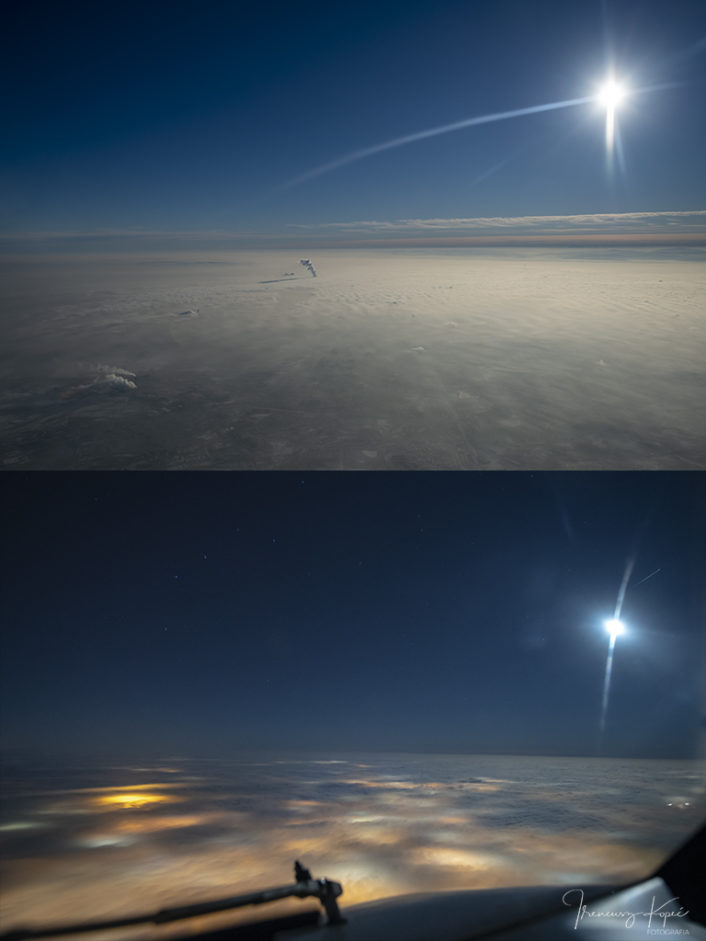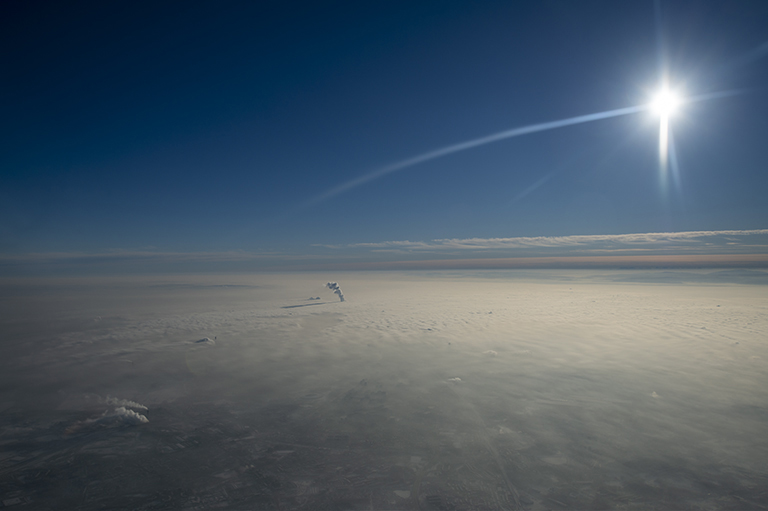Polish smog, as seen from a jet.
Smog is a major problem in Poland. During the wintertime it often makes the headlines of the mainstream media. The word “smog” comes from a fusion of two vocabulary items: “smoke” and “fog”. Smog usually appears in the areas where non-sufficient air movement comes together with air pollution, caused, for instance, by intensive coal-based heating used by the citizens.
The photos in this post, taken by Ireneusz Kopeć, a pilot for Enter Air, show how the aforesaid phenomenon looks from above.
In the photos you can find in this article, you can see the smog as it appears from the birdseye view. The pictures were taken over Silesia: one in the morning, shortly after 10 AM, the other one after darkness, past 9 PM.

Bad air quality is a critical problem in Poland. According to WHO, 33 out of 50 EU countries with the highest level of PM 2.5 concentrations are located in Poland, with the following cities leading the pack: Żywiec, Pszczyna, Rybnik, Wodzisław Śląski, Opoczno, Sucha Beskidzka, Kraków, Skawina i Nowy Sącz.
Smog becomes a major problem in Poland during the heating season. This dubious fame also has some dire consequences: for instance, as the Ministry of Entrepreneurship and Technology reported, back in 2016, 19K people died in Poland due to the smog. Back in January 2017 record breaking levels of air pollution were recorded in Poland, with the norms exceeded by more than 3000% in some locations.
Most of the pollution, car fumes and coal-fueled heating systems mix up in the air up to the level of 300 to 600 feet above the ground. Kopeć noted that on the date when the shots were captured, the air pollution norms were exceeded by 200-500%. Solid fuels and combustion engines are the main factors contributing to the phenomenon. Photographs as such could be used to raise the level of awareness of the citizens as well – so that they take relevant steps not to contribute to emergence of the phenomenon. The steps that could be potentially taken to eliminate the smog could include replacement of the heating systems with ones that do not use solid fuels that are the major factor contributing to the heightened concentration of solid particles in the air.
Noticeably, the cloud exposes solely the tips of the highest chimneys. As mesmerizing as the view may be, the problem is, literally, a burning issue that, however, seems to be disregarded by the government. The Polish officials have been making official statements frequently, suggesting that coal-driven electricity generation is the way to go, also using arguments suggesting that the Polish coal industry shall be supported, not abandoned.
Needless to say, smog can be found in many other places across the world, including China and the U.S. For instance, the following video shows an airliner landing in Los Angeles International airport (LAX) in thick fog: L.A. and its eastern and western neighborhoods are pretty smoggy areas because dust, ash and other solid particles mix with tiny, floating water droplets of fog and sea spray). Moreover, heavy fog keeps smog close to the ground, rather than letting it dissipate into the atmosphere.
https://www.instagram.com/p/BdllwQ5gSJi/









